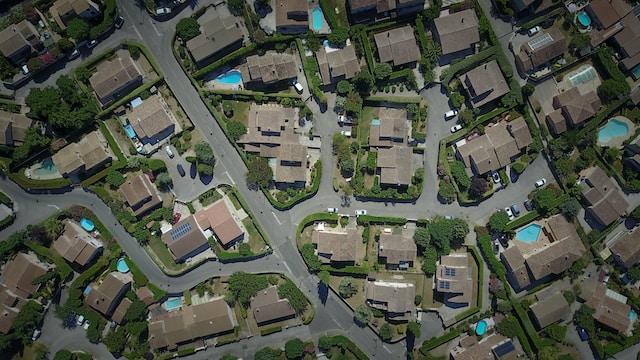Suburban areas are residential areas outside of cities, characterized by single-family homes. Urban areas are areas within cities, characterized by higher population density, diverse businesses.
The definition of suburban

Suburban living, often associated with spacious neighborhoods and a quieter pace of life, is characterized by its location on the outskirts of major cities. It offers a respite from the hustle and bustle found in urban centers. Suburbs are typically comprised of single-family homes with well-manicured lawns, tree-lined streets, and ample green spaces for residents to enjoy.
One key aspect that sets suburbs apart is their emphasis on community. Neighborhoods are often tight-knit, fostering a sense of belonging and camaraderie among residents. This can be seen through various community events such as block parties, neighborhood watch programs, and local gatherings at parks or recreational facilities.
The definition of urban

Urban areas, bustling with energy and activity, are the heart of modern civilization. Defined by dense populations and a wide range of amenities, urban spaces offer a vibrant lifestyle that is hard to resist.
An urban area typically refers to a highly populated region characterized by advanced infrastructure, commercial centers, cultural institutions, and diverse communities. These areas are usually marked by tall buildings, busy streets filled with cars and pedestrians alike, and an array of entertainment options such as restaurants, theaters, shopping malls, and parks.
Suburban Vs. Urban – Key differences
| Aspect | Suburban | Urban |
|---|---|---|
| Population | Lower density, spread out | Higher density, more crowded |
| Housing | Mostly single-family homes | Apartments, condos, townhouses |
| Space | More open space, larger yards | Limited open space, smaller lots |
| Transportation | Car-dependent | Public transportation options |
| Amenities | Fewer amenities, limited variety | Wide range of amenities, choices |
| Lifestyle | Quieter, slower pace of life | Busy, fast-paced environment |
| Diversity | Less diverse population | More diverse population |
| Cost of Living | Lower cost of living | Higher cost of living |
| Services | Fewer services and facilities | Abundance of services and facilities |
| Employment | Commute to urban areas for work | Greater job opportunities |
Population Density: Suburban areas have lower population density and are spread out, while urban areas have higher population density and are more crowded.
Housing: Suburbs are characterized by mostly single-family homes, while urban areas have a mix of apartments, condos, and townhouses.
Space: Suburbs offer more open space and larger yards, while urban areas have limited open space and smaller lots.
Transportation: Suburbs are often car-dependent, while urban areas provide more options for public transportation.
Amenities: Suburbs typically have fewer amenities and a limited variety of services compared to the wide range of amenities available in urban areas.
Lifestyle: Suburbs generally have a quieter and slower pace of life, while urban areas are known for their busy and fast-paced environment.
Diversity: Urban areas tend to have a more diverse population in terms of culture, ethnicity, and socioeconomic backgrounds compared to suburbs.
Cost of Living: Suburbs generally have a lower cost of living compared to urban areas, which often come with a higher cost of living.
Services: Urban areas typically offer a greater abundance of services and facilities such as shopping centers, restaurants, healthcare, and entertainment options.
Employment: Suburbs often require commuting to urban areas for work, while urban areas offer greater job opportunities due to their concentration of businesses and industries.
The benefits of living in suburban and urban areas
Suburban areas
- Peaceful Living: Suburbs offer a quieter and more peaceful environment away from the hustle and bustle of urban areas, providing a serene and relaxed lifestyle.
- Spacious Homes and Yards: Suburban living often includes larger homes and yards, giving residents more space for living, entertaining, and enjoying outdoor activities.
- Family-Friendly Communities: Suburbs often prioritize family needs, offering access to good schools, parks, and a safe environment for children to grow and thrive.
- Lower Cost of Living: Suburban areas typically have a lower cost of living compared to urban areas, with potentially more affordable housing, lower taxes, and reduced expenses.
- Community Atmosphere: Suburbs foster a strong sense of community, where neighbors often know and support each other, creating a close-knit and friendly social environment.
Urban areas
- Cultural and Entertainment Opportunities: Urban areas offer a wide range of cultural attractions, including museums, theaters, music venues, and a vibrant nightlife, providing abundant opportunities for entertainment and exploration.
- Career and Job Opportunities: Urban areas are often hubs of economic activity, offering a diverse range of job opportunities, professional networks, and career growth potential across various industries.
- Convenience and Accessibility: Urban living provides easy access to public transportation, a variety of shops, restaurants, and services within walking distance, making daily tasks more convenient and reducing dependency on cars.
- Social and Diversity: Urban areas are known for their diverse populations, fostering a multicultural and inclusive environment. This diversity contributes to rich social interactions, exposure to different perspectives, and a vibrant social scene.
- Educational and Intellectual Stimulation: Urban areas are home to renowned educational institutions, libraries, and research centers, providing ample opportunities for intellectual growth, lifelong learning, and access to a wide range of educational resources.
How to choose the right location for you?
Choosing the right location for your home is a decision that can significantly impact your lifestyle and overall happiness. It’s essential to consider various factors before making a final decision. Here are some key points to keep in mind when determining the best location for you:
Lifestyle: Consider what type of lifestyle you prefer. If you enjoy the hustle and bustle of city life, an urban area may be more suitable for you. On the other hand, if peace and quiet are important to you, suburban living might be a better fit.
Amenities: Think about the amenities that are important to you. Urban areas tend to offer a wide range of entertainment options, restaurants, shopping centers, and cultural events. Suburban areas often have more green spaces, parks, and recreational facilities.
Public transportation: Evaluate your commuting needs and access to public transportation options such as buses or trains. Urban areas typically have better public transit systems compared to suburban locations.
Cost of living: Consider your budget carefully when choosing where to live. Generally speaking, urban areas tend to have higher costs of living due to increased demand and higher property prices.
Community vibe: Reflect on whether you prefer a tight-knit community or a more diverse environment with people from different backgrounds.
Finding the ideal location requires careful consideration of these factors based on personal preferences and priorities.
Image Credits
Featured Image By Raphaël Biscaldi on Unsplash
Picture 1 – By Paul Kapischka on Unsplash
Picture 2 – By Owen Lystrup on Unsplash








